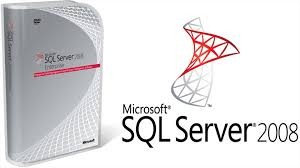21. What is PRIMARY KEY?
A PRIMARY KEY constraint is a unique identifier for a row within a database table. Every table should have a primary key constraint to uniquely identify each row and only one primary key constraint can be created for each table. The primary key constraints are used to enforce entity integrity.
22. What is UNIQUE KEY constraint?
A UNIQUE constraint enforces the uniqueness of the values in a set of columns, so no duplicate values are entered. The unique key constraints are used to enforce entity integrity as the primary key constraints.
23. What is FOREIGN KEY?
A FOREIGN KEY constraint prevents any actions that would destroy links between tables with the corresponding data values. A foreign key in one table points to a primary key in another table. Foreign keys prevent actions that would leave rows with foreign key values when there are no primary keys with that value. The foreign key constraints are used to enforce referential integrity.
24. What is CHECK Constraint?
A CHECK constraint is used to limit the values that can be placed in a column. The check constraints are used to enforce domain integrity.
25. What is NOT NULL Constraint?
A NOT NULL constraint enforces that the column will not accept null values. The not null constraints are used to enforce domain integrity, as the check constraints.
26. How to get @@ERROR and @@ROWCOUNT at the same time?
If @@Rowcount is checked after Error checking statement then it will have 0 as the value of @@Recordcount as it would have been reset. And if @@Recordcount is checked before the error-checking statement then @@Error would get reset. To get @@error and @@rowcount at the same time do both in same statement and store them in local variable.
SELECT @RC = @@ROWCOUNT, @ER = @@ERROR
27. What is a Scheduled Jobs or What is a Scheduled Tasks?
Scheduled tasks let user automate processes that run on regular or predictable cycles. User can schedule administrative tasks, such as cube processing, to run during times of slow business activity. User can also determine the order in which tasks run by creating job steps within a SQL Server Agent job. E.g. back up database, Update Stats of Tables. Job steps give user control over flow of execution. If one job fails, user can configure SQL Server Agent to continue to run the remaining tasks or to stop execution.
28. What are the advantages of using Stored Procedures?
Stored procedure can reduced network traffic and latency, boosting application performance.
Stored procedure execution plans can be reused, staying cached in SQL Server’s memory, reducing server overhead.
Stored procedures help promote code reuse.
Stored procedures can encapsulate logic. You can change stored procedure code without affecting clients.
Stored procedures provide better security to your data.
29. What is a table called, if it has neither Cluster nor Non-cluster Index? What is it used for?
Unindexed table or Heap. Microsoft Press Books and Book on Line (BOL) refers it as Heap. A heap is a table that does not have a clustered index and, therefore, the pages are not linked by pointers. The IAM pages are the only structures that link the pages in a table together. Unindexed tables are good for fast storing of data. Many times it is better to drop all indexes from table and then do bulk of inserts and to restore those indexes after that.
30. Can SQL Servers linked to other servers like Oracle?
SQL Server can be linked to any server provided it has OLE-DB provider from Microsoft to allow a link. E.g. Oracle has an OLE-DB provider for oracle that Microsoft provides to add it as linked server to SQL Server group.